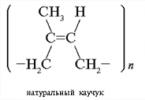The question of how to treat the wheel arches of a car sounds no less relevant than, for example, the problem of choosing the car itself. It is no secret that some cars undergo minimal anti-corrosion treatment of the body during factory assembly.
What can we say about used cars? After all, it is not known for certain how zealous the former owner was? And who wants a purchased car to rot within a few seasons? Therefore, it is necessary to carry out additional processing, both of the entire body and the wheel arches in particular, as the place most susceptible to mechanical deformations and other incidents associated with damage to the body coating.
How to treat car wheel arches and how to do this work correctly? There are several ways you can do this yourself. Let's start with the most important thing.

Anti-corrosion
Any metal part can sooner or later begin to rust. Especially - wheel arches, which take mechanical damage from small pebbles and sand while driving. And in winter, it contributes to the deterioration and failure of coatings - the mixture that is sprinkled on our roads during slippery seasons. Therefore, treating the wheel arches of a car with anti-gravel is one of the most optimal ways out of the situation.
Of course, you can contact the service to resolve the issue. But you can try to do a similar procedure yourself, saving a certain amount of money. And besides, you will be as sure as possible that everything was done according to the rules, because you processed the details yourself.

Operating procedure
Attention! It is advisable to carry out these works in warm weather, in a well-ventilated box or on open area protected from the wind.
Removing the wheel. We raise the car; for greater convenience, you need to tilt it a little more to one side. If there is no lift, use jacks and supports. But make sure that getting to the processing sites is as convenient as possible.
The wheel arches may be dirty. Therefore, under the pressure of water, we wash off the growths and carefully (you can use a brush) clean out the deposits.
When it dries, we inspect the internal coatings to detect any blemishes and rust. We treat the lesions with a rust converter. We clean off the rust, if there is any, with a metal brush attached to an electric drill (you can do it manually, but it will take much more time and effort). We finally sand these places with a sandpaper attachment using the same drill. Attention! When carrying out work, use safety glasses to protect your eyes from dust and pieces of rust flying in different directions.

We process the lesions again. Wait a little and wash off with plenty of water. After this, dry the wheel arches thoroughly (for these purposes, you can use a fan heater or hair dryer).
Then coat the surfaces with nitro solvent. And then we use masking tape to cover those surfaces that the anti-gravel should not get on. We wrap the pendant in polyethylene for the same reasons.
We apply the primer in several layers, allowing each of them to dry. You can take it in a can, or you can take it from a can - then we work with a wide brush.
Apply mastic to primed surfaces (also in several layers, allowing each layer to dry). We check that the anti-gravel coating covers all the required surfaces. After finishing the work, dry it thoroughly. Remove the plastic protection and tape. We put the wheel back and repeat the procedure on the other side of the car.

Liquid sound insulation
Problems with improving sound insulation probably exist in many cars. But if on flat surfaces sheet noise-absorbing material is usually used for these purposes, then here, on wheel arches, it can no longer be used effectively to the fullest extent. How to treat car wheel arches? Liquid sound insulation of these spare parts is recommended for use.
What does it give? It has been noticed that some of the road noise enters the car through unprotected wheel arches, preventing sound connoisseurs from listening to high-quality audio systems. Therefore, it is recommended to use liquid insulation to reduce the quantity and quality of noise.
There are two types: one applied to the primer and one applied directly to the cleaned surface.
Liquid sound insulation for cars is made on the basis of rubber with various additives. They provide the coating with resistance to mechanical damage and temperature changes. The procedure for applying insulation to the surface of the wheel arches from the inside is approximately the same as when using anti-corrosion agent (see above).
Anti-corrosion treatment of the bottom is the key to the long life of your body. Compared to other parts of the body, wheel arches and the bottom are most susceptible to corrosion, since these are the parts of the body that most often come into contact with water, sand, dirt and other factors that negatively affect the metal.
Today, many auto repair shops and service stations provide car body services, but I believe that paying for something that you can easily do yourself is a waste of money, the prerogative of the rich, for whom it is easier to give a few hundred dollars than to bother with all this. If you are one of those, my article today will be useless to you, because in it I will tell you how to do it yourself anti-corrosion treatment of the body and extend the life of your steel pet.
So, before you start, you need to acquire everything you need, that is, buy or get materials and stock up on tools. Tools you will need:
1. Hard paint brush;
2. Metal brush;
3. Drill with wire attachment.
Materials:
1. Solvent 646;
2. Acetone;
3. Orthophosphoric acid(if you don’t have one, use an alternative - a rust converter);
4. Special primer for the bottom (zinc-filled or GF-021);
5. Mastic.
For example, in my practice I have used such mastics as: Shield-M, Barrier, Cordon. Why exactly these ones, because they are rubber-filled, in other words, they contain rubber components.
If everything is available, you can begin preparatory work.
1. Before starting the treatment, it is necessary to thoroughly wash the treatment areas, that is, the bottom and arches. To do this, I suggest using powerful water pressure, which the well-known “Kärcher” can provide you with.
5. Remove the front fenders as well.
Now actually myself anti-corrosion treatment.
1. Carefully inspect the factory coating; if you notice any peeling, be sure to remove it using an electric drill and a wire nozzle. If there are areas susceptible to corrosion, strip them down to bare metal.
2. The next stage is surface treatment with orthophosphoric acid.
3. After this, you need to rinse everything with water and dry it with a warm stream of air. Also pay attention to the ends of the thresholds, most often the paint is peeled off there.
4. After cleaning the areas, apply a primer and let dry overnight.
5. Now, using a brush, apply the first layer of mastic, the layer thickness should not exceed 0.5 millimeters.
6. Again, let it dry for about 4 hours, then apply the second layer, after another 4 hours, apply the third. In order for the mastic to become liquid, it must be heated, or it can be diluted with kerosene and gasoline.
It wouldn’t hurt to apply it to the bottom, as well as inner part wings - Movil. In addition, I recommend installing fender liners and treating the lower part of the sills with an anti-gravel coating, which can be purchased in special cylinders.
In conclusion, correct execution After all the steps described above, in compliance with technology, you and your car will not be afraid of rust or any other corrosion-related issues.

The main enemy of a car body is metal corrosion. From this article you will learn what materials are used in anti-corrosion treatment of a car, how to do it yourself and when to do it.
Why should you do it?
To maintain the car’s resistance to rust, it is necessary to periodically carry out anti-corrosion treatment. Factory anti-noise mastics covering the bottom and wheel arches only protect the metal from mechanical influences. In addition, the composition is applied before painting, having previously covered numerous holes with technological stickers. When assembling the car, they are removed, simultaneously exposing sections of the bottom. In this case, after purchasing the car, it is useful to check the condition of the coating.The frequency and volume of treatment depend on the operating conditions of the vehicle, the completeness of the previous anti-corrosion protection, and what preparations were used. In any case, it is recommended to carry out an inspection every 2-3 years for a preventive inspection and elimination of minor damage.
For new cars, anti-corrosion treatment is not required in the first three to four years. "Spill" the rapids at new car there is no need. Additional anticorrosive protection imposed at the dealer or done voluntarily is nothing more than reinsurance. As well as annual prophylaxis. Processing hidden cavities should be carried out no more than once every three years.
What materials are needed?
For protection against corrosion (not counting primers, varnishes and enamels), the following are used: anti-gravel coatings, preservatives for hidden cavities, compositions for the bottom, materials for internal surfaces fenders and wheel arches. Their purpose is to prevent the premature appearance of corrosion on metal body parts.For the underbody of the car
They form a strong, elastic and fairly thick protective film on the bottom of the car. These materials are applied to a clean or primed metal surface. These materials necessarily contain corrosion inhibitors. IN garage conditions applied to metal with a simple brush. Among domestic materials, the most accessible composition is bitumen mastic filled with rubber crumbs.Another function of mastic is to improve the acoustic properties of the body as an alternative to car sound insulation. For this purpose, crumb rubber is added to it, which makes the “armor” thicker and reduces noise.
For wheel arches
 They practically have the same properties as the materials for the bottom, with some exceptions. The fact is that the surface of the wheel arches is more susceptible to abrasive wear. Streams of wet mud, snow, ice, sand and stones, falling off the rotating wheels, constantly bombard the surfaces of the wheel arches. If they are not properly protected, corrosion will quickly take over.
They practically have the same properties as the materials for the bottom, with some exceptions. The fact is that the surface of the wheel arches is more susceptible to abrasive wear. Streams of wet mud, snow, ice, sand and stones, falling off the rotating wheels, constantly bombard the surfaces of the wheel arches. If they are not properly protected, corrosion will quickly take over. If you put plastic shields (“fender liners”) in the wheel arches, then the problem is practically solved. There is a so-called liquid locker - durable elastic material. A thick layer of this material applied to the surface of the wheel arches will reliably protect them from abrasive wear. In some cases, applying a liquid locker may be preferable to installing plastic fender liners.
Wheel arches can be treated with underbody compound if applied in two layers. If you do it yourself, the material can be applied with a brush.
For hidden cavities
 The car has many hidden cavities. These are thresholds, pillars, side members, floor reinforcements, trunk lid reinforcements. Access to them is possible only through special technological openings.
The car has many hidden cavities. These are thresholds, pillars, side members, floor reinforcements, trunk lid reinforcements. Access to them is possible only through special technological openings. Cavity preservatives are liquid, low-viscosity materials (similar in consistency to motor oil) that contain corrosion inhibitors. They form a semi-drying film on the walls of hidden cavities. They have high penetrating ability - they are guaranteed to get into all cracks and joints. Another important property - they are capable of displacing water from the surface of the metal.
Most famous car preservative for hidden cavities - Movil. It has been produced for four decades and has not lost its relevance. This non-eco-friendly formulation still provides the best protection. You can buy it in any packaging, including aerosol.
It is not recommended to buy Waxoil brand preparations, because it contains only 13% dry residue, everything else is a solvent. By the way, the absence of odor indicates a high degree of purification of solvents, and not good anti-corrosion properties.
Another Rust Stop compound made from mineral oil, has high hygroscopicity (the property of not allowing water to pass through). Therefore, treatment of hidden cavities with this composition (or waste motor oil with the same properties), must be repeated at least once every two years. Otherwise, instead of protection, the effect will be the opposite: excess moisture will promote corrosion.
How to make it yourself - main steps
Washing. First you need to clean the treated areas from dirt. This must be done carefully, because... anti-corrosion materials will not hold tightly and will “fly off” after a while. For example, if you are going to treat the bottom of the car, you need to wash it from dirt with a soap solution. Ideally, with a preparation like Karcher or a mini-wash.Drying. After washing, it is necessary to dry the treated areas; no composition will hold up against “wet” conditions. Speed up this process You can use a technical hair dryer. If you do it conscientiously, then you need to treat all places with white spirit or a regular solvent. Remember, the better you wash and dry, the longer the applied compounds will last.

It would also be a good idea to wear a protective suit to perform anti-corrosion treatment car or basic safety equipment - gloves, hat.
Application anti-corrosion materials in hidden cavities (sills, wheel arches) are done using air spray - a spray gun (if you have special equipment) or from a spray can (if you do it yourself). The underbody of the car and other easily accessible places are treated using rollers or a paint brush (it is advisable to have several different sizes) - apply the drug manually. Apply in 3-4 layers at a temperature not lower than +15 C with intermediate drying of the layers (at least 30-60 minutes). Then leave to dry for at least a day.
It should be said that domestic bitumen-rubber mastic, in my experience, is of little use for application to pure metal. It peels off and exposes the rusty iron it is supposed to protect. Therefore, it must be applied to a previously primed surface. For the underbody of a car, a rubber mixture in a jar with rubber crumbs is suitable. It not only protects the metal, but also works as sound insulation. For wheel arches, it is more convenient to buy anti-gravel in aerosol cans. It is easier to apply, and the time until complete drying is no more than 2-3 hours.
Internal cavities, for example, thresholds, side members and pillars, must be treated with Movil type preservatives. We do it as follows: apply mastic to the bottom (cheaper in a jar), and after 2-3 hours - anti-gravel in cylinders. The effect is great!
The car body begins to age as soon as it leaves the transport assembly line. The body is often made from steel, which over time undergoes a process of rusting. Return after this appearance The machine is quite complex, so you need to protect it from corrosion. And for this you need to perform anti-corrosion treatment of the body yourself.
Why is anti-corrosion treatment needed?
Let us immediately make a reservation that it may be required for several reasons at once. The main one is the fact that during operation the bottom of all machines is subject to the negative effects of gravel, sand, small stones and other third-party objects.
And taking into account the fact that the protection is scratched and cracked, these irritating factors act directly on the metal, which is why corrosive processes develop.
Note! Russian manufacturers They do not carry out anti-corrosion treatment on cars, so car owners have to take care of the protection themselves. As for foreign cars, in most cases they are treated with anticorrosive, but it is still better to check this point (to do this you just need to drive into the “pit”).
Another reason for mandatory processing can be considered the natural wear of the metal. If you do not pay attention to this, then in the future you will need to restore the rotten body. And it costs almost the same as good car boo.
What is the best way to treat a car body against corrosion?
By options we mean possible materials(they are also called anticorrosives), with which you can protect the body from rusting. There are several of these, let’s take a look at them.
Option #1. Paraffin compounds. They are distinguished by the fact that they dry immediately after application, forming an elastic protective layer, which retains its properties even with temperature changes.

Option #2. Bitumen mastic. It is made from bitumen and synthetic resins, and therefore the material is capable of performing several functions at once:
- metal conservation;
- his defense.
Option #3. Oil compositions. This type of anticorrosive agent is used in a liquid state, thanks to which it effectively fills even the smallest cracks.
Option number 4. PVC rubber materials. As a rule, they are used by the manufacturers themselves, since they are considered the most reliable and durable.
Option #5. Liquid plastic. This material has rather low mechanical stability, so, of course, it is usually used only as additional protection housings.

We also note that the material you choose must have some mandatory properties.
- Protective agents intended for hidden cavities must absorb rust products, be sufficiently elastic, and adhere to as soon as possible and not provide negative influence on the paintwork.
- Products designed for wheel arches and underbody must be resistant to mechanical damage and temperature changes. In addition, they must protect the metal from various aggressive environments.
- If the material is intended for anti-gravel protection, then it must contain polymer elements. It should also provide protection to the factory finish.
As for release forms, anticorrosive agents are produced:
- in banks;
- in the form of sprayers.
When choosing, give preference to the first option, since these remedies last much longer. In addition, pay attention to other properties, including:
- fire and explosion safety;
- compound;
- fire resistance;
- service life;
- presence of toxic substances.
How much will it cost to protect a car body from corrosion?
The cost of complete processing (it includes wheel arches and the bottom of the body) in specialized companies can range from 5 to 15 thousand rubles. Additionally, you can order a processing service exhaust system– it will cost another 3-4 thousand rubles.

Doing everything yourself is cheaper. So, for example, a 500 ml can of anti-gravel spray will cost about 400 rubles, and the same amount of protective plastic coating will cost 450-500 rubles. A 500-ml can of wax-based bitumen mastic costs from 550-600 rubles. But there are also more expensive analogues, the prices of which start from 700-800 rubles.
Note! Separately, it is worth mentioning the protection of the motor and engine compartment. For this purpose, special impregnations are made - for example, PRESTO, 1 liter of which costs an average of 1,150 rubles.
But in order to perform independent processing, you need to have certain skills and knowledge. Although there is nothing super complicated in the procedure.
Main stages of anti-corrosion treatment
The process consists of five main stages; we will consider the features of each of them.
Stage one. First the bottom is washed. The type of washing depends only on the degree of cleaning. You can, for example, simply wash away dust and dirt, or you can remove everything from the surface, including old anti-corrosion coating. It is advisable to use a special car wash for this, which sprays hot water under high pressure(about one hundred atmospheres).
Stage three. After this, the working surfaces are inspected for defects. Attention is paid to both large and minor rust spots (the latter may grow in the future). In addition, the lower surface of the body is checked for cracks and through holes. If any, they should be eliminated, then you can continue applying protective agents.

Stage four. Do-it-yourself anticorrosive treatment of the underbody of a car is carried out by spraying (compressors are often used for this), and the pressure is in this case is 7-8 atmospheres - this way the material will be applied as evenly as possible. In addition, the product will effectively penetrate into all cavities, cracks, and welds.
Note! The thickness of the protective layer on the lower elements of the vehicle must be at least 250 microns. If it is less, then the product simply will not cope with its protective functions. If it is larger, then the anticorrosive agent may peel off.
Stage five. At the end, the car must be left for 24 hours, after which you can begin full operation.
Bottom line
All car owners know about such a procedure as anti-corrosion treatment. However, most of them mistakenly believe that the manufacturer has already taken care of everything, and they themselves do not need to monitor the condition of their car. This opinion is not entirely wrong, however domestic cars, as noted above, are not subject to such processing. Yes, and each model has its own vulnerabilities and other features.
Rust often begins on hidden elements of the body, that is, where moisture accumulates. This especially applies to those Vehicle who are older than three years. Therefore, anticorrosive agent should be applied with a frequency of 1-2 years.
Finally, we note that best protection car body - this is its periodic treatment with anti-corrosion agents. And such processing can be done both in specialized centers and at home, using available tools.



